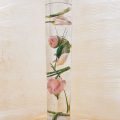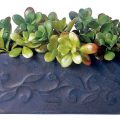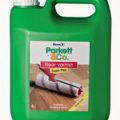photo: Oleg Kulagin, Vladimir Solomonov, Sergei Prikhodko, Tatyana Shkondina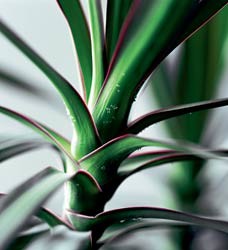 How to care for dracaenaDragons are brought fromsouthern countries. But not in an egg, as one might expect, but in cardboard boxes. Each one has instructions explaining that the lifeless log inside should be placed in water, and in a month the thick dragon skin (or bark) will burst and a small green sprout will appear from it. This is the future mighty dragon, or rather, the dragoness - this is how the Greek word Dracaena is translated, which gave the name to this genus of plants. The genus Dracaena consists of 80 (according to other sources, from 40 to 150) species. Most grow in tropical and South Africa and the surrounding islands. The northern border of the range passes through the island of Madeira, Ethiopia and the island of Socotra. Many species are found in South and Southeast Asia (in the north, some species reach the southern slopes of the Eastern Himalayas and tropical regions of China - the island of Taiwan). Some live in the New Guinea region. And in America, only 2–3 species grow. The name of the plant "dracaena" is associated with its external powerful appearance and the amazing feature of the famous dragon trees of the Canary Islands and Socotra Island (draco and cinnabar-red) to secrete red resin. An Indian legend says that in ancient times, dragons constantly fought with elephants - they loved elephant blood. But one day, a dying elephant fell on the dragon and crushed it. Their blood mixed. This mixture was called cinnabar, then they began to call the earth containing red mercury sulphide, and, finally, the resin of the dragon tree. And on the island of Socotra, the cinnabar-red resin of the dracaena was called "the blood of two brothers". According to Indian mythology, the god of creation Brahma had the appearance of an elephant, and his brother Shiva, the god of destruction, had the appearance of a cobra or dragon. This legend reflects the eternal struggle between creation and destruction, between life and death. The cinnabar-red resin protruding from the trunks and flowing down the aerial roots has long been used by local residents. "Dragon's blood" was discovered in the burial caves of prehistoric inhabitants of the Canary Islands - it may have been used for embalming. The resinous juice was used to treat diseases and color wines. Nowadays, cinnabar-red resin of dracaena is used to make metal varnish. But do not be confused if the dracaena you bought does not secrete red resin. This is typical only for adult trees growing in the wild.
How to care for dracaenaDragons are brought fromsouthern countries. But not in an egg, as one might expect, but in cardboard boxes. Each one has instructions explaining that the lifeless log inside should be placed in water, and in a month the thick dragon skin (or bark) will burst and a small green sprout will appear from it. This is the future mighty dragon, or rather, the dragoness - this is how the Greek word Dracaena is translated, which gave the name to this genus of plants. The genus Dracaena consists of 80 (according to other sources, from 40 to 150) species. Most grow in tropical and South Africa and the surrounding islands. The northern border of the range passes through the island of Madeira, Ethiopia and the island of Socotra. Many species are found in South and Southeast Asia (in the north, some species reach the southern slopes of the Eastern Himalayas and tropical regions of China - the island of Taiwan). Some live in the New Guinea region. And in America, only 2–3 species grow. The name of the plant "dracaena" is associated with its external powerful appearance and the amazing feature of the famous dragon trees of the Canary Islands and Socotra Island (draco and cinnabar-red) to secrete red resin. An Indian legend says that in ancient times, dragons constantly fought with elephants - they loved elephant blood. But one day, a dying elephant fell on the dragon and crushed it. Their blood mixed. This mixture was called cinnabar, then they began to call the earth containing red mercury sulphide, and, finally, the resin of the dragon tree. And on the island of Socotra, the cinnabar-red resin of the dracaena was called "the blood of two brothers". According to Indian mythology, the god of creation Brahma had the appearance of an elephant, and his brother Shiva, the god of destruction, had the appearance of a cobra or dragon. This legend reflects the eternal struggle between creation and destruction, between life and death. The cinnabar-red resin protruding from the trunks and flowing down the aerial roots has long been used by local residents. "Dragon's blood" was discovered in the burial caves of prehistoric inhabitants of the Canary Islands - it may have been used for embalming. The resinous juice was used to treat diseases and color wines. Nowadays, cinnabar-red resin of dracaena is used to make metal varnish. But do not be confused if the dracaena you bought does not secrete red resin. This is typical only for adult trees growing in the wild.
Types
We use dracaenas only asdecorative houseplants. One of the most popular is the fragrant dracaena, native to West Africa. In natural conditions, it reaches a height of 6 meters. The leaves, concentrated in the upper part of the stem, are wide, up to 8 cm at the base, strongly curved and slightly wavy. The definition of "fragrant", as you can easily guess, it received thanks to its fragrant white or yellowish flowers. Its forms are "Massangeana" with a wide yellow-green middle stripe; Victoriae with green leaves with a wide cream or golden-yellow border and thin silvery-gray stripes in the center. Now many new varieties of this species have appeared on sale: Golden Coast, Lemon Lime, Janet Craig, Lindenil and others.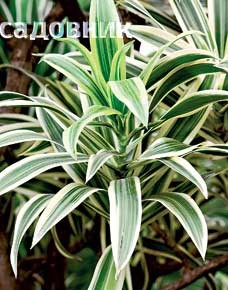 Reflecta Song of India
Reflecta Song of India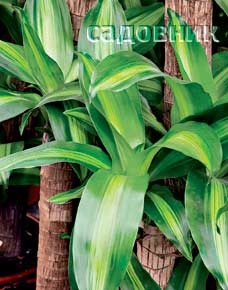 Flagrans Massangeana (Dracaena fragrant)
Flagrans Massangeana (Dracaena fragrant)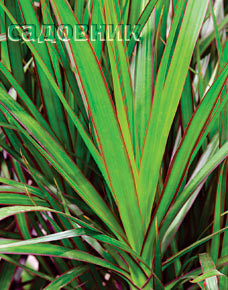 Marginota Vertakt (Dracena bordered)
Marginota Vertakt (Dracena bordered)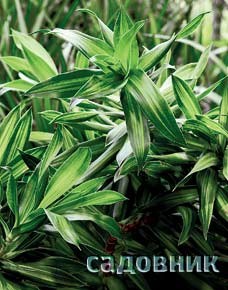 Reflecta Song of Jamaica (Dracaena(reflexed)The variegated forms of the tropical East African Dracaena deremskaya are varied. This is a tree-like plant with an unbranched, densely foliated trunk, lanceolate leaves from 30 to 60 cm long and about 5 cm wide. In culture, it is represented by the varieties Bausei - with a wide white middle stripe on a dark green leaf; Warneckii - with a milky-green middle stripe and two narrow white stripes at the edge; Shrieveriana - with a wide yellow-white border along the edge of the leaf; Compacta - with a shortened stem and almost black-green leaves sitting very closely on it. By the way, you can create bright compositions from different varieties and types of dracaena. They also go well with other indoor plants, such as ficus, aglaonema, aspidistra, spathiphyllum, sansevieria. South African dracaena from humid subtropical forests - hooker's dracaena, or rumphius dracaena - a plant with a thick, sometimes branched trunk about two meters high. It is crowned with a compact crown of leathery lanceolate dark green shiny leaves, slightly tapering at the base, and with a pronounced groove along the midrib. From the island of Mauritius came to us dracaena reflexa, so named for the downward-slanted leaves. Several of its varieties are also found in the mountain forests of Madagascar. This plant has a stem up to 4 m high, branched from the base, densely covered with lanceolate leaves 12-17 cm long and up to 2.5 cm wide. The most famous form is Song of India with two light yellow stripes along the edge of the leaf and the closely related Song of Jamaika. Madagascar is home to Dracaena ornate with long, shiny, wavy, yellow-green leaves with a reddish edge and Dracaena marginata. This plant has an elegant, thin, branched stem as thick as a finger. The branches end in rosettes of very narrow, olive-green leaves about 40 cm long with a reddish narrow border along the edge. Its garden form Tricolor, 'rainbow tree', bred in Japan, is widely known. Very narrow cream stripes cross its olive-green foliage with a pink-red border along the edge. Recently, the varieties Magenta, Vertact, Kopstec and the most decorative Colorama have become widespread.
Reflecta Song of Jamaica (Dracaena(reflexed)The variegated forms of the tropical East African Dracaena deremskaya are varied. This is a tree-like plant with an unbranched, densely foliated trunk, lanceolate leaves from 30 to 60 cm long and about 5 cm wide. In culture, it is represented by the varieties Bausei - with a wide white middle stripe on a dark green leaf; Warneckii - with a milky-green middle stripe and two narrow white stripes at the edge; Shrieveriana - with a wide yellow-white border along the edge of the leaf; Compacta - with a shortened stem and almost black-green leaves sitting very closely on it. By the way, you can create bright compositions from different varieties and types of dracaena. They also go well with other indoor plants, such as ficus, aglaonema, aspidistra, spathiphyllum, sansevieria. South African dracaena from humid subtropical forests - hooker's dracaena, or rumphius dracaena - a plant with a thick, sometimes branched trunk about two meters high. It is crowned with a compact crown of leathery lanceolate dark green shiny leaves, slightly tapering at the base, and with a pronounced groove along the midrib. From the island of Mauritius came to us dracaena reflexa, so named for the downward-slanted leaves. Several of its varieties are also found in the mountain forests of Madagascar. This plant has a stem up to 4 m high, branched from the base, densely covered with lanceolate leaves 12-17 cm long and up to 2.5 cm wide. The most famous form is Song of India with two light yellow stripes along the edge of the leaf and the closely related Song of Jamaika. Madagascar is home to Dracaena ornate with long, shiny, wavy, yellow-green leaves with a reddish edge and Dracaena marginata. This plant has an elegant, thin, branched stem as thick as a finger. The branches end in rosettes of very narrow, olive-green leaves about 40 cm long with a reddish narrow border along the edge. Its garden form Tricolor, 'rainbow tree', bred in Japan, is widely known. Very narrow cream stripes cross its olive-green foliage with a pink-red border along the edge. Recently, the varieties Magenta, Vertact, Kopstec and the most decorative Colorama have become widespread.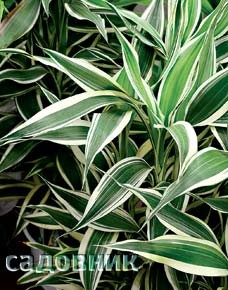 Sanderiana White Stripe Gold (Dracena Sander)
Sanderiana White Stripe Gold (Dracena Sander)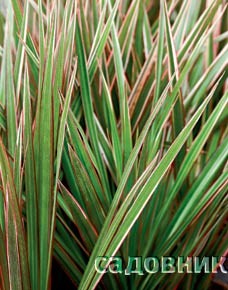 Marginata Bicolor (Dracena bordered)
Marginata Bicolor (Dracena bordered)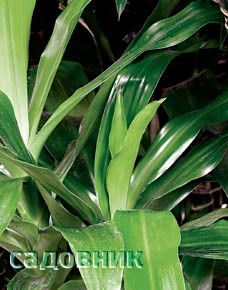 Flagrans Janet Craig (Dracaena scented)
Flagrans Janet Craig (Dracaena scented)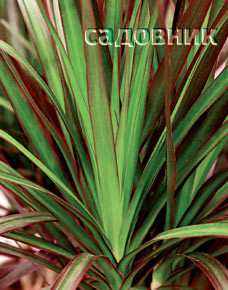 Marginata Magenta (Dracaena marginata)Becomespopular dracaena sandriana, a small subshrub from tropical Africa. It is represented by the White Stripe variety. And the Guinean subshrub dracaena godsefi differs from other plants of this genus in the shape of its leaves - they are small and rounded. And decorated with golden spots.
Marginata Magenta (Dracaena marginata)Becomespopular dracaena sandriana, a small subshrub from tropical Africa. It is represented by the White Stripe variety. And the Guinean subshrub dracaena godsefi differs from other plants of this genus in the shape of its leaves - they are small and rounded. And decorated with golden spots.
Growing
All dracaenas grown indoorsrooms, are surprisingly viable and very resistant to adverse conditions. This is one of the most unpretentious indoor plants. Dracaenas tolerate dry indoor air well, are shade-tolerant and are not afraid of drafts. Although they still do better in diffused sunlight, but not in direct sunlight. In deep shade, variegated varieties can fade or die. Most dracaenas are tropical plants, they do not tolerate a decrease in room temperature below + 15 ° C. Subtropical dracaenas prefer lower temperatures in winter (up to + 12 ° C), and in summer they feel great on the balcony or in the garden. The crown of the dracaena should be regularly sprayed and the leaves should be wiped with a soft cloth from time to time. The soil for dracaenas is prepared from equal parts of turf and leaf soil, peat, humus and sand. They need to be watered moderately, after the soil dries out, and fed regularly with mineral or organic fertilizers (once every 2-3 weeks). At the beginning of the active growth period, organic fertilizers are preferable, and from mid-summer until the end of the active growing season, it is better to choose mineral fertilizers. The soil should be moist when feeding. With good care, dracaena grows quickly, and once a year it needs to be replanted into pots that are slightly larger in size. Moreover, it is precisely "a little" - if the container is too large, the plant may die. It is no longer necessary to replant a large dracaena - it is enough to only partially replace the top layer of soil with fresh, nutrient-rich soil. Just do this carefully - do not damage the root system. The plant can be fed only a month after transplantation.






